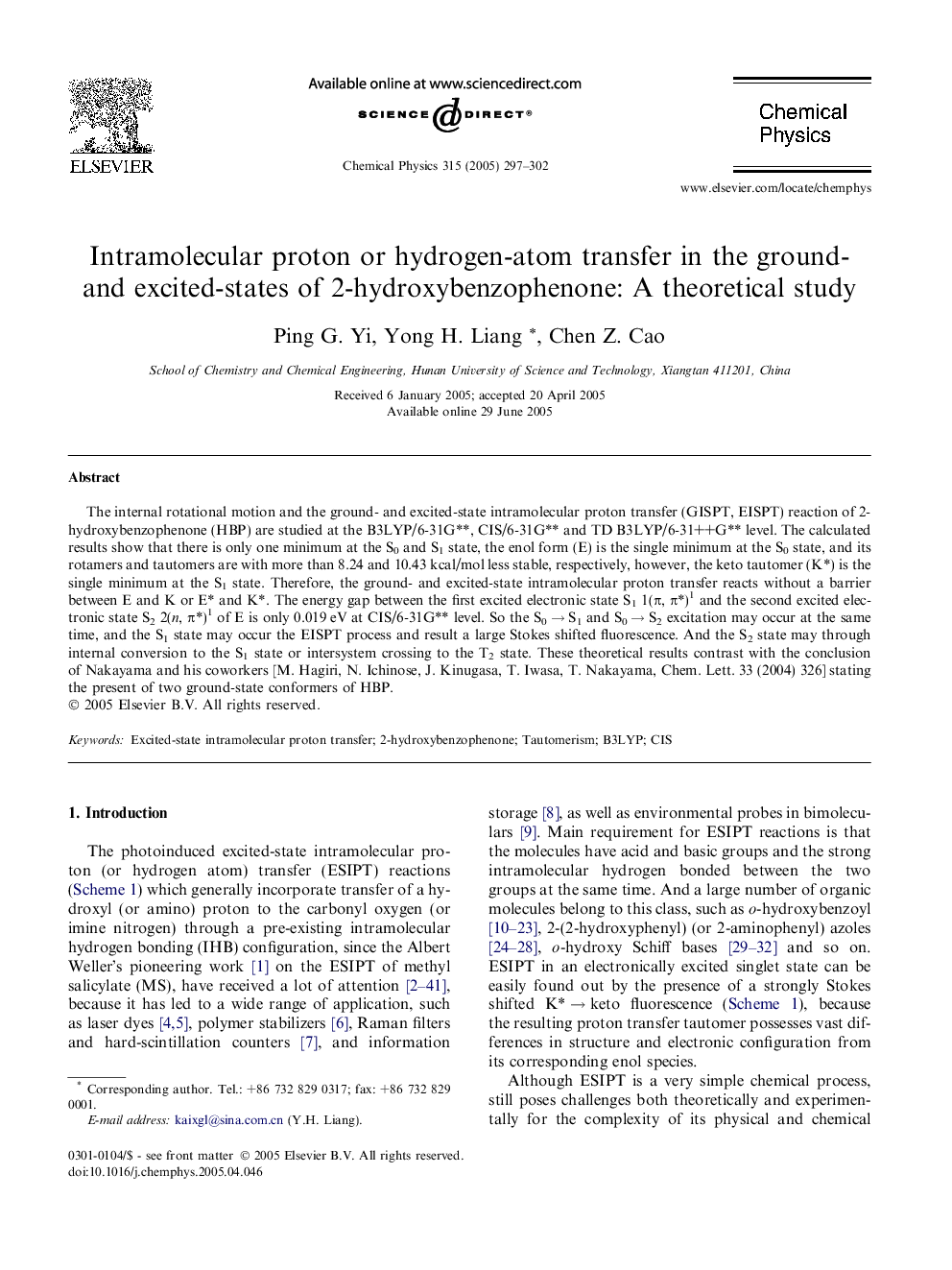| Article ID | Journal | Published Year | Pages | File Type |
|---|---|---|---|---|
| 9575205 | Chemical Physics | 2005 | 6 Pages |
Abstract
The internal rotational motion and the ground- and excited-state intramolecular proton transfer (GISPT, EISPT) reaction of 2-hydroxybenzophenone (HBP) are studied at the B3LYP/6-31G**, CIS/6-31G** and TD B3LYP/6-31++G** level. The calculated results show that there is only one minimum at the S0 and S1 state, the enol form (E) is the single minimum at the S0 state, and its rotamers and tautomers are with more than 8.24 and 10.43 kcal/mol less stable, respectively, however, the keto tautomer (K*) is the single minimum at the S1 state. Therefore, the ground- and excited-state intramolecular proton transfer reacts without a barrier between E and K or E* and K*. The energy gap between the first excited electronic state S1 1(Ï, Ï*)1 and the second excited electronic state S2 2(n, Ï*)1 of E is only 0.019 eV at CIS/6-31G** level. So the S0 â S1 and S0 â S2 excitation may occur at the same time, and the S1 state may occur the EISPT process and result a large Stokes shifted fluorescence. And the S2 state may through internal conversion to the S1 state or intersystem crossing to the T2 state. These theoretical results contrast with the conclusion of Nakayama and his coworkers [M. Hagiri, N. Ichinose, J. Kinugasa, T. Iwasa, T. Nakayama, Chem. Lett. 33 (2004) 326] stating the present of two ground-state conformers of HBP.
Related Topics
Physical Sciences and Engineering
Chemistry
Physical and Theoretical Chemistry
Authors
Ping G. Yi, Yong H. Liang, Chen Z. Cao,
